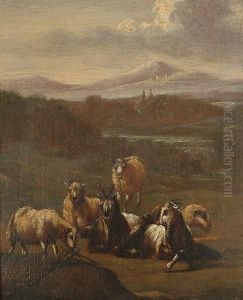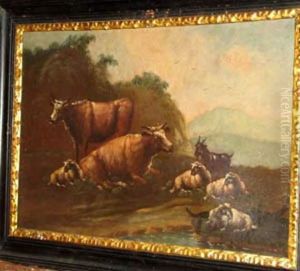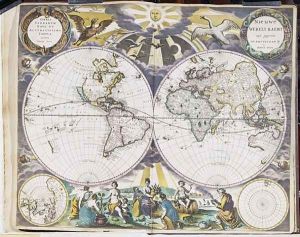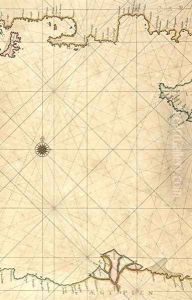Pieter Goos Paintings
Pieter Goos was a notable Dutch cartographer, engraver, and publisher during the 17th century, which was known as the Golden Age of Dutch cartography. Born in 1616 in Amsterdam, Goos came from a family with strong connections to the maritime chart-making industry. His father, Abraham Goos, was also an esteemed cartographer and engraver, which likely influenced Pieter's career path.
Pieter Goos is best known for his maritime atlases and pilot guides, which were essential tools for navigation at the time. He produced a series of sea atlases that were widely circulated and respected for their accuracy and detail. His most famous work was the 'Zee-Atlas' (Sea Atlas), which was first published in 1666 and contained a collection of charts covering all the known seas of the world. This atlas was not only a significant achievement in cartography but also a work of art, featuring elaborate and decorative elements that were characteristic of the period.
Goos's work contributed to the dominance of Dutch cartography in the 17th century, a period during which the Netherlands was a major maritime power with an extensive trading network. His charts were used by sailors and navigators across the world, reflecting the global reach of Dutch maritime influence. In addition to his sea atlases, Goos also published the 'Nieuwe Groote Zee-Spiegel,' a pilot guide that provided detailed instructions for navigating various coastal waters, which was another testament to his expertise in the field of maritime navigation.
Pieter Goos operated his business from Amsterdam, which was the center of mapmaking and publishing in Europe during his lifetime. His works were often published in multiple languages, indicating their international appeal and utility. Goos's contribution to cartography was part of a larger movement of scientific and artistic achievements during the Dutch Golden Age, which saw advancements in various fields, including art, science, and trade.
Goos continued his work until his death in 1675. After his passing, his business was carried on by his widow, who continued to publish his maps and atlases, ensuring that his legacy in the world of cartography would endure. Today, Pieter Goos's maps are considered valuable historical documents and works of art, providing insight into the knowledge and aesthetics of the 17th-century Dutch cartographic tradition.



